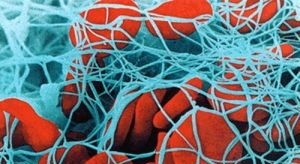 The Triad of Virchow is called the theory of thrombosis and thrombophlebitis development.
The Triad of Virchow is called the theory of thrombosis and thrombophlebitis development.
According to Dr. Virchov's concept on the way to thrombosis and thrombophlebitis, the body passes through 3 main stages:
- trauma to the inner wall of the vein;
- decrease in venous blood flow velocity;
- increase in blood clotting.
Contents
- First point - damage to the vascular wall
- Step two - bleeding disorder
- The final stage - the slowing of the blood flow
- What is embolism?
- Consequences of
- Features of prevention and treatment
First point - damage to the vessel wall
A damaged vessel needs a thrombus to protect the body from bleeding. To form a thrombus, special factors are needed that cause clotting of the blood.
In this case, the processes of fibrinolysis are inhibited. If the vessel was damaged during a stressful condition, the formation of a thrombus becomes possible due to the release of adrenaline into the blood.
Step two - bleeding disorder
In the blood there is an excessive amount of thromboplastin and thrombin, also called procoagulants. Thrombosis reduces the anticoagulant activity.
Rapid intravascular coagulation of blood becomes possible due to a significant influx of coagulation factors into the vessel. The reactions inside the vessel are divided into 2 types: local and generalized.
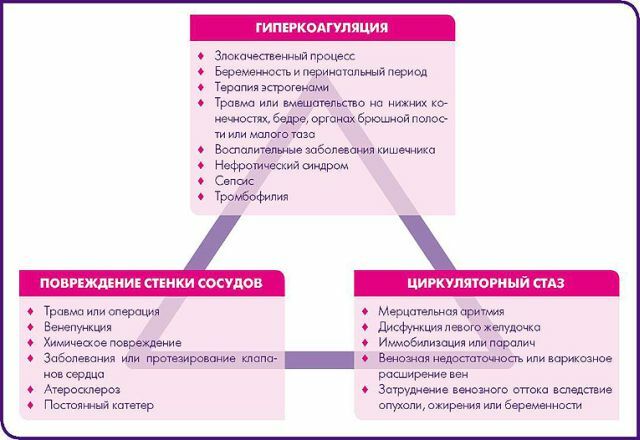
The final stage - the slowing of the blood flow
The third stage, which is characterized in the triad of Virchs, is the slowing of the blood flow followed by its violation.
Thrombosis passes through 2 phases. The cell phase( includes aphesia, aggregation and agglutination of platelets) begins with a change in the electrical potential of the vessel wall. After that, the blood cells change their charge. Platelets in this case get adhesive-aggregation ability. The next phase is plasma.
A severed thrombus may obstruct the blood flow or completely clog the vessel. If the patient does not receive the necessary treatment, tissue necrosis begins. Especially dangerous is not even the thrombus itself, but the infection, to which its appearance may be accompanied.
After destruction of the thrombus, the infected elements can spread through the circulatory system. In those places where they stay, abscesses occur.
What is embolism?
This term refers to the obstruction of the vessels by emboli, which brings a current of lymph or blood. Depending on the nature of the emboli, 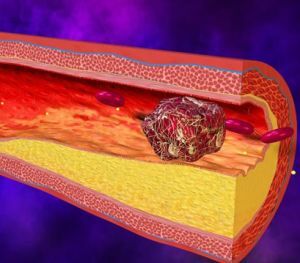 distinguishes endogenous and exogenous species. There is also a classification based on localization. This includes embolism of the portal vein system, embolism of the large or small circles of the circulation.
distinguishes endogenous and exogenous species. There is also a classification based on localization. This includes embolism of the portal vein system, embolism of the large or small circles of the circulation.
Air embolism has an exogenous origin. It occurs in the case of damage to large veins. The pressure should be close to zero or negative. Has the same origin and gas embolism. It occurs with anaerobic gangrene and caisson disease.
Endogenous embolism occurs as a result of the disconnection of the thrombus when it is purulent or aseptic melting. In addition, the following types of embolism are distinguished:
- Tissue .It occurs when tissue injuries occur. Especially dangerous this species is for those who have had a malignant tumor. Embolism in this case leads to the formation of metastases.
- Paradoxical .Occurs when the interventricular and interatrial septa did not occur.
- Fatty .If the liver, pelvic or subcutaneous tissue, as well as bone marrow, is damaged, droplets of fat can enter the blood, which leads to a blockage of blood vessels.
Consequences of
One possible consequence is myocardial ischemia. This becomes possible with occlusion of the coronary artery. Myocardial ischemia leads to a stop in the functioning of cardiomyocytes due to a lack of oxygen, which, in turn, leads to myocardial infarction.
Stroke may also be a consequence of vessel blockage. It is associated with ischemia, hemorrhages, etc. In such cases, the thrombus usually appears next to atherosclerotic plaques. With a gradual blockage of the artery, the development of the disease occurs at a slower rate.
Embolism leads to trophic disorders, which then lead to gangrene if the patient suffers from diabetes or atherosclerosis. Nevertheless, in most cases, such consequences can be avoided, since the patency of the vessel is gradually restored.
Features of prevention and treatment of
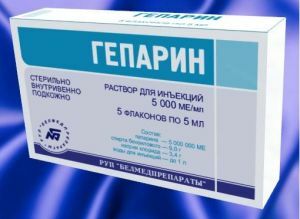 It is noted that the use of Heparin is not able to reduce mortality among patients who have thrombi. The risk of deep vein thrombosis and pulmonary embolism can be reduced, but the likelihood of bleeding increases dramatically. This means that the use of Heparin does not give the necessary clinical effect, or it is completely absent.
It is noted that the use of Heparin is not able to reduce mortality among patients who have thrombi. The risk of deep vein thrombosis and pulmonary embolism can be reduced, but the likelihood of bleeding increases dramatically. This means that the use of Heparin does not give the necessary clinical effect, or it is completely absent.
Mechanical methods of treatment should also not be given special hopes. To patients with insulin they are generally forbidden to use.
To prove the inefficiency of Heparin was possible with the help of postoperative patients. To avoid possible complications, it is necessary to conduct an analysis of the benefits and risks of one or another method, since all anticoagulants lead to an increased risk of bleeding.
For example, in atrial fibrillation, the risk can be calculated on the basis of additional factors. If a patient suffers from hypertension and is an elderly person, the danger is greatly increased. The use of warfarin is also among the factors to be feared.
Particular importance is given to preventive measures taken in relation to patients suffering from thrombosis.
Mechanical compression of calves is used in cases where the patient has recently suffered a deep vein thrombosis, or when the patient is contraindicated in everything else. If the patient entered the operation, then after it, compression stockings are used in the rehabilitation period.
Low molecular weight heparin is used in such cases as orthopedic surgery, prolonged immobility or 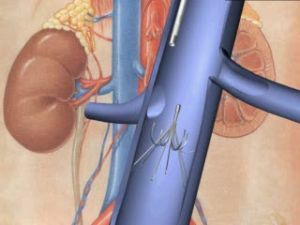 severe illness. Low molecular weight heparin is also often used by patients who do not suffer from surgical diseases.
severe illness. Low molecular weight heparin is also often used by patients who do not suffer from surgical diseases.
One of the most commonly used methods for therapy in the inferior vena cava is the venous filter( or cava filter).A high prophylactic efficacy was demonstrated by the preparation Polikozanol. Dosage should be at least 10 and not more than 20 mg daily.
Policosanol efficacy was demonstrated by studies conducted by Cuban scientists.
Patients suffering from thrombosis, should not eat foods high in cholesterol. The drugs used for medicinal purposes include:
- Resins and fibrates .
- Nicotinic acid .
- Statins of .
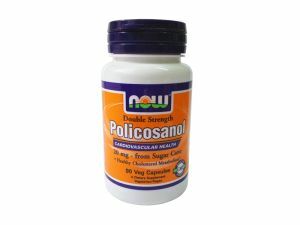
- Inhibitors of cholesterol absorption in the intestine .Such drugs include Polikozanol. Preference is given to this medicine by experts because it does not change the coagulability of blood.
- Anticoagulants .Drugs significantly reduce the risk of thrombosis. However, their use does not exclude side effects. To avoid unpleasant consequences, it is necessary to control the magnitude of INR.If the patient is conscious and capable of self-care, control is also possible at home.
In the diagnosis of thrombophlebitis involved in various methods of determining the rate of clotting of blood. These can be thrombodynamics, thromboelastography, a prothrombin time test, a thrombin generation test, etc.
